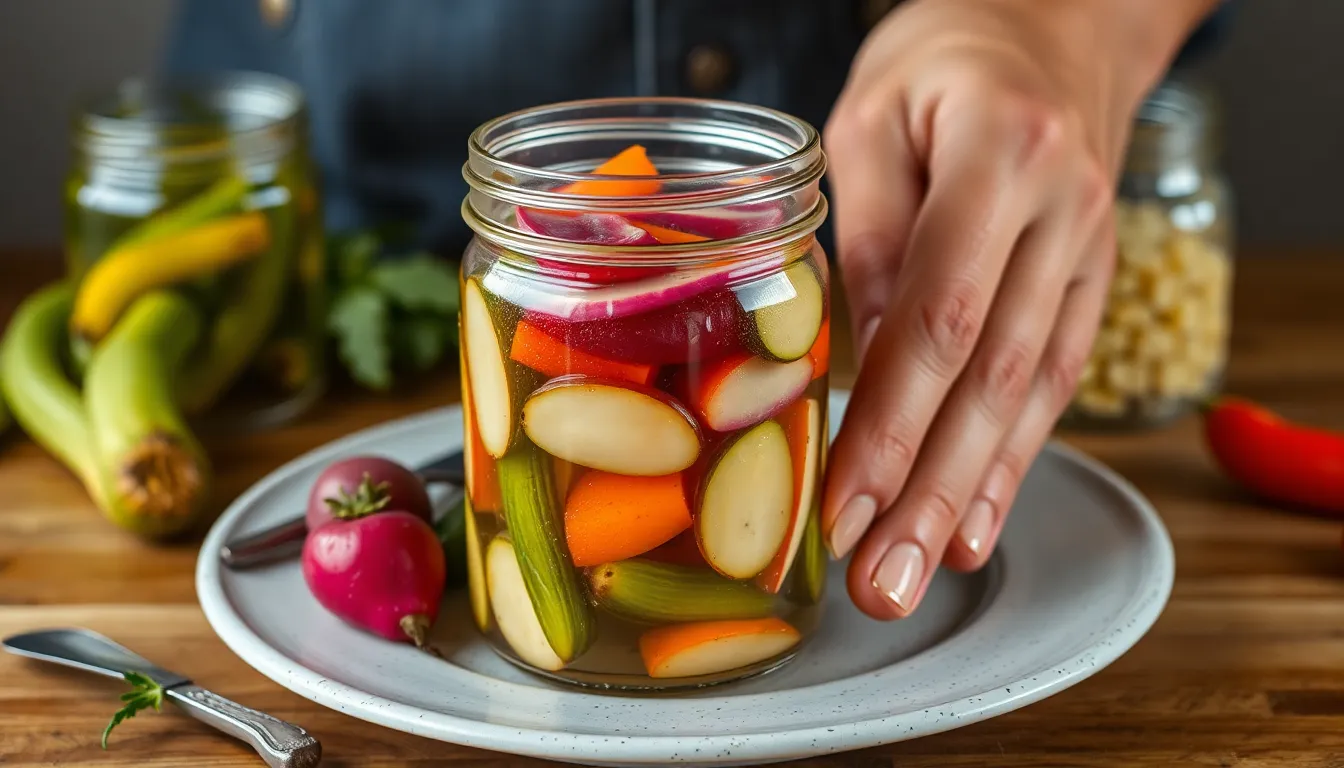The Art of Pickling: How Vinegar Can Transform Your Vegetables
I. Introduction: The Enchanting World of Pickling
Pickling is more than just a culinary technique; it’s a timeless tradition that spans cultures and centuries. From the sun-drenched fields of Asia to the rustic kitchens of Eastern Europe, the art of pickling has been embraced by countless civilizations. It serves as a testament to human ingenuity in food preservation.
In many societies, pickling played a crucial role in enhancing food security, especially before the advent of refrigeration. With vinegar as a key player in this process, it not only preserves but also transforms ordinary vegetables into extraordinary culinary delights. Let’s dive deeper into this delightful world!
II. Understanding the Basics: What is Pickling?
At its core, pickling is the process of preserving food by immersing it in an acidic solution, typically vinegar. The primary aim is to extend the shelf life of vegetables while imparting unique flavors. There are two main methods of pickling: fermentation and quick pickling.
- Fermentation: This traditional method relies on naturally occurring bacteria to convert sugars into lactic acid, creating a tangy flavor over time.
- Quick Pickling: A faster approach where vegetables are submerged in vinegar and left for a shorter period, usually resulting in a milder taste.
Different types of vinegar can significantly influence the flavor of your pickles:
- White Vinegar: Sharp and clean, ideal for classic pickles.
- Apple Cider Vinegar: Fruity and slightly sweet, great for sweeter pickles.
- Rice Vinegar: Mild and nutty, often used in Asian-style pickles.
- Balsamic Vinegar: Rich and complex, perfect for gourmet pickling.
III. The Science Behind the Brine: How Vinegar Works in Pickling
The secret to successful pickling lies in the acidity of vinegar. When vegetables are submerged in a vinegar solution, the acidic environment inhibits the growth of spoilage bacteria, ensuring preservation.
During the pickling process, vinegar interacts with the vegetables, leading to a series of chemical reactions:
- Acidity breaks down cell walls, resulting in a satisfying crunch.
- Flavors are extracted from spices and herbs, infusing the vegetables.
- Essential nutrients are preserved, enhancing the nutritional profile of the vegetables.
IV. Choosing Your Vegetables: The Best Candidates for Pickling
When it comes to pickling, not all vegetables are created equal. Here are some popular vegetables that take well to pickling:
- Cucumbers: The quintessential pickle.
- Carrots: Crunchy with a slight sweetness.
- Cauliflower: Absorbs flavors beautifully.
- Radishes: A zesty bite that brightens any dish.
- Beets: Earthy and vibrant, perfect for sweet pickles.
Consider the seasonality of vegetables when pickling. Fresh, in-season produce not only provides better flavor but also ensures a more vibrant pickle. Always opt for the freshest ingredients available!
V. The Pickling Process: A Step-by-Step Guide
Now that you understand the basics, let’s walk through the pickling process.
Step 1: Preparing Your Vegetables
Start by washing your vegetables thoroughly to remove any dirt or pesticides. Cut them into uniform sizes for even pickling. For some vegetables, a pre-treatment may be beneficial:
- Blanching carrots or green beans can enhance texture.
- Salting cucumbers helps draw out moisture for a crispier pickle.
Step 2: Crafting the Perfect Brine
Your brine serves as the backbone of your pickles. Here’s a basic recipe:
- 1 cup vinegar (any type)
- 1 cup water
- 2 tablespoons salt
- 1 tablespoon sugar (optional)
To enhance the flavor, consider adding spices such as:
- Mustard seeds
- Coriander seeds
- Dill weed
- Chili flakes
Step 3: The Pickling Method
Choose your pickling method based on time and desired flavor intensity:
- For quick pickling, let the vegetables sit in the brine at room temperature for 1-24 hours.
- For traditional pickling, refrigerate and let sit for 1-2 weeks for full flavor development.
Comparison of Pickling Methods
| Method | Time Required | Flavor Intensity | Best For |
|---|---|---|---|
| Quick Pickling | 1-24 hours | Mild to Moderate | Last-minute snacks |
| Traditional Pickling | 1-2 weeks | Intense | Long-term storage and flavors |
VI. Flavoring Your Pickles: Creative Twists on Tradition
When it comes to pickling, the sky’s the limit regarding flavors. Here are some ideas to elevate your pickles:
- Unique Spices: Experiment with turmeric for a golden hue, or add fennel seeds for a sweet-anise twist.
- Infused Flavors: Consider garlic and dill for classic dill pickles, or introduce chili for a spicy kick.
- Regional Variations: Dive into Asian pickles by adding soy sauce and ginger, or create Mediterranean-inspired pickles with olive oil and oregano.
VII. Pairing Your Pickles: Elevating Meals with Pickled Goodness
Pickles are incredibly versatile and can enhance a variety of dishes:
- Sandwiches: Add crunch and acidity to deli meats or vegetarian sandwiches.
- Salads: Toss pickles into green salads for an unexpected zing.
- Appetizers: Serve pickles alongside charcuterie boards or cheese platters.
- Main Courses: Incorporate pickles in tacos or grain bowls for a refreshing contrast.
VIII. Troubleshooting Common Pickling Problems
Even the best cooks run into issues. Here are some common problems and solutions:
- Spoilage: Ensure all utensils and jars are sterilized to prevent contamination.
- Soft Textures: Use fresh, firm vegetables and avoid over-processing.
- Off-Flavors: Adjust your spices or vinegar type for better balance. Always taste your brine before pickling!
When in doubt, safety first! Always discard any jars that show signs of spoilage, such as unusual colors or odors.
IX. Conclusion: Your Journey into Pickling Awaits!
Pickling is an adventure waiting to be explored. With a little knowledge and creativity, you can transform humble vegetables into flavor-packed delights. So, gather your favorite produce, choose your vinegar, and start your pickling journey today. Who knows, you might just discover your new favorite culinary passion!




